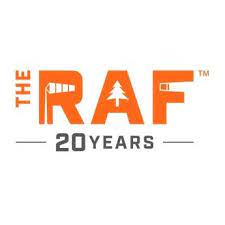


The Recreational Aviation Foundation preserves, improves, and creates airstrips for recreational access.
Recognized by the IRS as a non-profit 501(c)(3) charitable organization, the RAF is using tax-deductible donations to:
The RAF strives to build strong working relationships with other aviation groups, both on the state and national levels. Many of the issues that involve the RAF transcend state boundaries. The RAF encourages various state pilot organizations to form active committees that work on recreational airstrip issues. To facilitate this, the RAF is forming a cadre of State Liaisons to assist the states in becoming effective leaders in the efforts to protect recreational airstrips.
The RAF facilitates the enactment of state recreational-use statutes amendments to specifically include aviation. These laws considerably reduce a private airstrip landowner’s liability when allowing public, non-commercial use of the airstrip.
In order to provide a connection between the backcountry and surrounding communities, the RAF is attracting donors who wish to specifically target their charitable donations locally. These funds have recently been directed toward a campaign to construct pilot shelters at larger, paved airports that serve as gateways to the backcountry. Similar in concept to the rest stops along our interstate highway system, the first of these shelters was constructed at Gallatin Field (BZN) in Bozeman, Montana. It offers pilots a place to pitch a tent on the grass near their airplane, relax in front of a fire and even take a hot shower – all at no charge.
The centerpiece of RAF airstrip acquisitions is Ryan Field. This donation by Ben and Butcher Ryan includes 152 acres of land surrounded by US Forest Service lands and only two miles from Glacier National Park. There is a 2,500-foot airstrip and the RAF recently completed a pilot’s campground.
The RAF is depending on other pilots to help them in identifying potential real estate for the development of new airstrips. Oftentimes we have friends or acquaintances who built their own airstrip and want to see their dream continue long after they are gone. These situations lend themselves perfectly to the tax deductions that are available to the donor.
Without the enabling work of the RAF, your recreational opportunities – whether cross-country or backcountry – will continue to diminish as airfields are closed or their use is restricted. Earning your pilot certificate wasn’t easy. Creating new airstrips isn’t easy either. Nothing worthwhile ever is.
The foundation invites donations of any kind, including land suitable for airstrip development. Cash donations are always welcome and fully tax-deductible. The RAF offers tax and legal assistance for donors, and the Board members receive no compensation. They love flying as much as the rest of us and they’re here for us, the pilots… not profits.
“If not now, when; and if not us, who?” Those two questions were the basis for this organization we call the Recreational Aviation Foundation (RAF). Like certain words in other documents that we all refer back to, they are as appropriate today as they were on that starlit evening when those two questions were asked of the group of pilots a number of years ago while sitting around a campfire on a backcountry airstrip.
This group had experienced the rare opportunity to enjoy the combination of flying and stopping off in places that have little in the way of conventional aviation facilities. There was no FBO sign at this spot, no nearby motel, not even the old Buick courtesy car. But there was the smell of pine trees, cowboy coffee, wood smoke, the distant howl of a coyote, and the flicker of firelight. They knew these places were special and that someone needed to step up to the plate and defend them.
Thus, this group of a little more than a half dozen started on a journey that they knew very little about. They were committed, they were hard-working, and they had little if any, room for the words “You can’t do it” in their vocabulary.
The previous paragraphs are the heart of what started the RAF. The RAF was first organized by this group of Montana pilots who had been working on airstrip issues in that state for several years. They realized the threat of recreational airstrip closure was of national concern. They also recognized that there was the need for a unified effort by pilots everywhere to protect public, aviation-related recreational opportunities. These same few people were also aware that the recreational pilots’ community did not have the tools and knowledge to effectively participate in issues that affected airstrips on private land.
Thus the RAF was formed, by-laws established, incorporated in Montana and received its non-profit public charity, 501(c)3, determination by the IRS in December 2003.
Since 2003 the RAF has grown to over 9,000 members with donors from all fifty states and additional donors from over thirteen foreign countries. We have made inroads in the aviation community and are looked at as the “go-to” guys for aviation-related issues pertaining to both public and private recreational airstrips and backcountry airstrips.